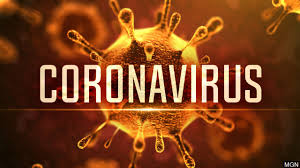The Novel Coronavirus: Understanding & Preventing the Spread of the Infection That’s Gone Viral

By now, everyone has heard of the 2019 Novel Coronavirus (COVID-19), which has quickly spread from its geographical origins in Wuhan, China, to the U.S., Canada, and a number of European and Asian countries. Due to its rapid spread, with over 40,000 confirmed cases to date, the 2019 Novel Coronavirus has caused regulatory bodies like the International Health Regulations Emergency Committee of the World Health Organization (WHO) to declare the outbreak as a public health emergency of international concern (PHEIC).
As the virus continues to spread, it’s important to answer a number of key questions about coronaviruses, the 2019 Novel Coronavirus’ pathogenic nature, and guidelines for disinfection:
Are Coronaviruses New?
While the name of the 2019 Novel Coronavirus may imply that coronaviruses are “novel,” this family of viruses has actually been documented since the mid 1960s. Most coronaviruses are present in animals, such as bats and camels, and do not spread to humans. However, in two recent instances—severe acute respiratory syndrome (SARS) and Middle-East respiratory syndrome (MERS)—the CDC has documented coronaviruses spreading from animals to people. Along with these two earlier coronaviruses, the 2019 Novel Coronavirus marks the third human coronavirus to cause severe illness.
What Classifies a Virus as a Coronavirus?
Coronaviruses are enveloped viruses, meaning they are RNA viruses that are surrounded by an outer coating comprised of a lipid bilayer (water-insoluble fatty coating). Enveloped viruses spread through a “budding off” process during which a new virus becomes wrapped in an outer coating. However, if this layer in dissolved, these viruses are relatively easy to kill—making them more susceptible to disinfectants than non-enveloped viruses. The Novel Coronavirus therefore falls into a category of viruses that are most susceptible to disinfectants.
How Do We Prevent & Disinfect Against the 2019 Novel Coronavirus?
When preventing the further spread of the Novel Coronavirus, it is critical to listen to guidelines put forth by government protection agencies. According to the CDC, in the absence of an available vaccine against COVID-19, the best way to prevent against infection is to avoid exposure to the virus and take standard preventative actions to respiratory illness (e.g. wash hands; avoiding touching your eyes, nose and mouth; and avoid close contact with people who are sick). Mobile devices are a major carrier of pathogens. Any effective Hand-Hygiene Program should include a mobile disinfection device such as the KR615 UV Box.
When it comes to disinfecting environments that have been exposed to the virus, the Environmental Protection Agency (EPA) has determined that the COVID-19 has met the conditions outlined in the EPA’s emerging viral pathogens guidance, meaning eligible products can apply to receive kill claim amendments for the coronavirus. This process helps assist healthcare facilities to select a vetted disinfectant against coronavirus. In addition, the World Health Organization (WHO) has recommended using a hospital-grade disinfectant effective against enveloped viruses such as Noroxycdiff which is EPA registered to kill C.diff spores in 2 minutes and is also effective against envelope viruses.
For more information, please contact Safety Net, LLC.
866-918-8546
info@safetynetamerica.com

